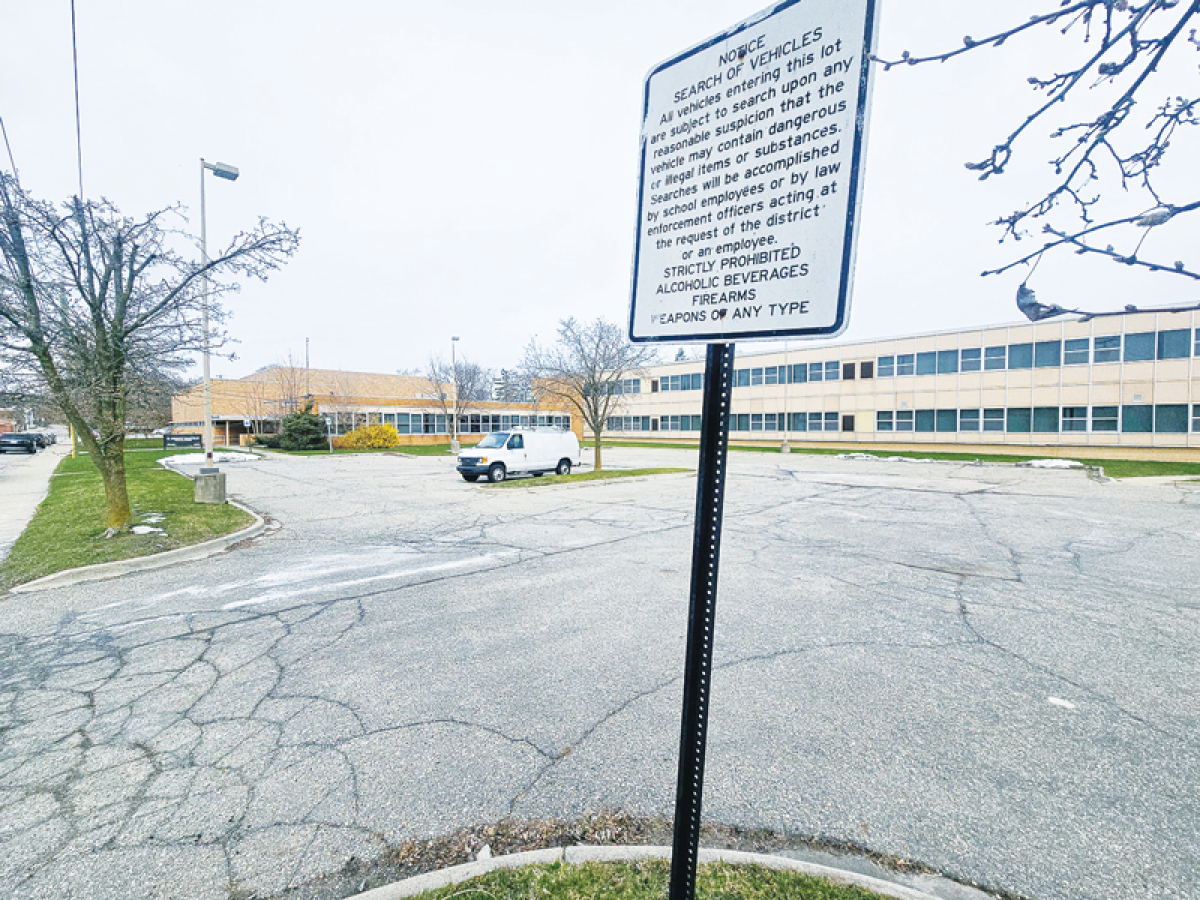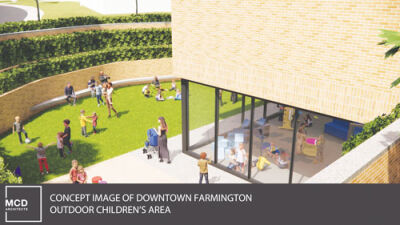FARMINGTON — A project that has been on the minds of Farmington officials for years may be on the road to completion.
The Maxfield Training Center, located at 33000 Thomas St., is a 3-acre parcel of land in the city’s downtown.
The property has been vacant for approximately 12 years.
It was previously owned by Farmington Public Schools, operating as a high school and then a junior high school before becoming the Maxfield Training Center, according to Kevin Christiansen, who is the city’s planning and building department director.
According to Christiansen, the city entered into negotiations to purchase the property in 2019 and completed the acquisition shortly thereafter.
He said that Robertson Brothers Homes agreed to purchase the Maxfield Training Center site in 2021, with the city working with them since that time.
Christiansen said that agreement is soon to be completed, with “the acquisition by Robertson Brothers Homes to take place in May.”
“The Maxfield Training Center is going to be redeveloped into a 53-unit townhome project by Robertson Brothers,” said Farmington Mayor Joe LaRussa. “They will be tearing down the old Maxfield Training Center, the old Farmington Junior High, and replacing it with 53 brand-new townhomes. … The expectation is that they begin construction sometime this summer — I believe end of June, early July.”
The Maxfield Training Center will become Hillside Townes, according to LaRussa.
Christiansen said that the project will consist of three-story units.
At his recent State of the Cities address, LaRussa referred to the project as transformational, as aside from adding housing, it will serve as a vehicle for the “total” reconstruction of Thomas Street, with water and utility infrastructure upgrades, as well as walkability and Americans With Disabilities Act improvements.
“The project is also a springboard for a federally funded community project to add an ADA-compliant connection to Shiawassee Park,” LaRussa said during his address.
According to Christiansen, site amenities will include new landscaping and pedestrian connections. Two single-family homes will be removed, “which has been designed by Robertson Brothers Homes as part of the Hillside Townes project, and has been reviewed and approved by the city … with final details to be completed by Robertson Brothers, working with the city Downtown Development Authority.”
LaRussa said that the project has been on the city’s radar for a long time.
“I believe that even before the city purchased the property from the schools, the schools were attempting to get it sold to a developer but were unsuccessful,” he said. “The city then purchased the property so that we could have a more direct influence on the process and the selection of the developer-partner.”
The units will be about 1,330 square feet with two bedrooms and a one-car attached garage, according to Tim Loughrin, who is the vice president of land acquisition for Robertson Brothers.
According to Loughrin, Robertson Brothers has been looking into the property for a long time, even prior to the city purchasing it.
“We think it’s a great site,” Loughrin said. “We’ve spent a lot of time and effort on it. It’s going to be a great project when we’re able to build it out. It was a lot of coordination and partnership with the city.”
Although the units have not been priced yet, according to Loughrin, he said based on similar projects, he expects them to start in the $300,000-something range.
The Michigan Department of Environment, Great Lakes and Energy’s brownfield program, according to the state’s site, provides technical guidance and financial incentives to evaluate and mitigate environmental risks.
LaRussa explained a process that Robertson Brothers has to go through.
“They have to bring that brownfield plan forward,” he said. “That brownfield plan will then be submitted to the City Council for approval, and their final site plan will go to the Planning Commission. So they do have a couple more steps they have to go through to finalize their plans before they can put a shovel in the ground.”
LaRussa has pondered the potential advantages to the city, should the project proceed as expected, including using a dormant property “right in the middle of our town.”
“It’s (going to) bring 53 new families, residents, customers, to downtown businesses, so we expect the economic impact will be pretty substantial,” he said. “Anytime you put new housing in place, particularly in a place like downtown Farmington, it’s bound to have a positive effect on the city’s economy, and obviously, activating the property is better than having it sitting dormant.”
From Christiansen’s perspective, what could be on the way is a “very significant project in the history of the city.”
“The city is very excited and extremely pleased to (have) had the opportunity, working together with Robertson Brothers, to bring this project to the city and to finally realize the redevelopment of the Maxfield Training Center site,” he said. “The city’s plans for the Maxfield Training Center site are being realized with the implementation of Hillside Townes. The project brings new housing to the city of Farmington and its downtown, meeting the goals and objectives of the city’s redevelopment plans.”
LaRussa discussed how the project fits in with the direction that the city has been going.
“It provides us with yet another step toward good growth for our city, in terms of both population and, obviously, property tax revenue,” he said. “In their 2050 regional economic forecast, the Southeast Michigan Council of Governments forecasted that … by 2050, we would add 131 new housing units. Well, this 53 units puts us at a much-accelerated pace, a much faster rate of adding those housing units. … So, it’s a very positive step for us to see that housing growth and population growth — much faster than what regional economic forecasts were stating on our behalf.”
LaRussa said that the project allows Farmington to grow its tax base without raising taxes, and from his perspective, it is one of other opportunities that are out there for the city.
“I think we just need to continue to tell Farmington’s story and talk about the opportunity that exists here, and attract the right developer-partners to help us realize the vision that we have for the city,” he said. “It’s been a long time coming … and I’m just very excited to see it come to fruition.”
 Publication select ▼
Publication select ▼






















